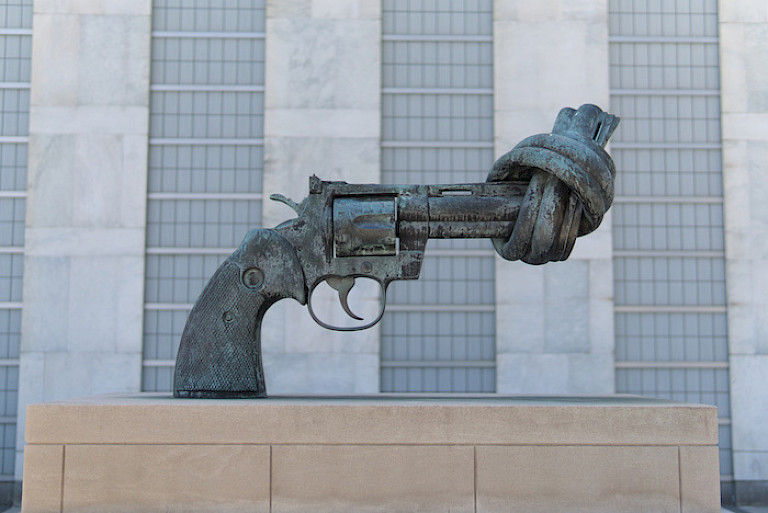



Call for Papers/Presenters
2025 World Public Art Conference at United Nations
Deadline 1 August
Conference Overview:
The 2025 United Nations World Public Art Conference features expert global perspectives on the burgeoning and impactful field of public art, presented on the UN platform and designed to foster interdisciplinary dialogues between academics and practitioners from around the world.
Host Organizations:
Organizing Institutions:
Date: December 3, 2025
Venue: United Nations Headquarters Meeting Room, New York City
Conference Objectives:
Theme Interpretation:
1. Addressing the United Nations’ sustainable development philosophy, the conference aims to explore pathways and approaches public art can effectively address two core challenges of sustainable development: balancing the needs of humanity; and the environmental health of the planet; and improving socio-cultural development.
2. Presentations will investigate how public art and artists can serve to deeply connect humans with nature, individuals with one another, bridge cultural divides, spark dialogues and foster cross-sector collaborations, understanding and inclusivity.
3. Presenters will share practical experiences and theoretical insights on how public art advances the goals of societies around the world, such as valuing cultural diversity and inclusiveness, fostering social cohesion and advancing the principles of sustainable development.
Call for Papers/Presenters:
We cordially invite artists, scholars and experts from the field of public art internationally, as well as policy makers, curators and other professionals to submit expressions of interest in the form of speech abstracts for the 2025 United Nations World Public Art Conference. Submissions should pertain to one of the following four themes:
Theme 1: Connection | Public Art Explores Multicultural Values
Theme 2: Action | Innovative Practices in Public Art
Theme 3: Co-Creation | Cross-Disciplinary Collaboration in Public Art
Theme 4: Trends | Public Cultural Policies and Developments
Submission Requirements for Speech Abstracts:
Abstract Evaluation:
All submitted abstracts will be reviewed by the organizing committee of the 2025 United Nations World Public Art Conference for approval.
Accepted abstracts will be selected for presentation, contingent on subsequent receipt and approval of full text draft (in October). The evaluation criteria include:
Benefits to Authors
1. Publication in the 2025 UN World Public Art Conference Proceedings (bilingual Chinese-English edition)
2. Designation as Conference Presenters with in-person speaking slots
3. Global dissemination of recorded presentations via the United Nations website and in major media directed at international art organizations.
Abstract Submission
To register for the event, please complete the following info and send it in an email back to us.
Primary Author/Presenter Information
Contact conference organizers via e-mail: IIPA@oa.shu.edu.cn
Key Milestones:
Note: On-site attendees may be required to pay a registration fee. Additional details and other updates will be sent to your specified email address. If you have any questions, please contact IIPA@oa.shu.edu.cn.
-----------------------------------------------------------------------------------------------------------
Appendix: Introduction to Host and Organizing Institutions
1. Host Organizations:
Established in 1963 and headquartered in Geneva, Switzerland, UNITAR is a direct subsidiary of the United Nations committed to enhancing global governance effectiveness and empowering member states to implement the 2030 Agenda for Sustainable Development.
UNITAR website: https://unitar.org
Shanghai University is a comprehensive research-oriented university administrated by Shanghai Municipality and co-established by the Ministry of Education and the Shanghai Municipal Government. It is a key institution under China’s “Project 211,” a high-level local university in Shanghai and a university included in the “Double First-Class Initiative.”
Shanghai University website: https://www.shu.edu.cn
Affiliated with UNITAR, the International Academy of Arts (IAA) is a project implementation body committed to fostering global citizenship and cultural diplomacy through arts, culture, and social research.
IAA website: https://www.iaarts.org/
The Institute for Public Art (IPA) is an international research platform and think tank, an NGO that gathers and shares information and research outcomes related to public art. IPA provides a platform for international dialogue and collaboration, a network serving to strengthen and advance public art research worldwide.
IPA website:https://www.instituteforpublicart.org
The International Institute of Public Art (IIPA) at Shanghai University is an academic research institution that leverages the university’s multidisciplinary strengths. Guided by the concept of “place remaking,” it promotes the global flourishing of public art, builds an international network for research and exchange in public art theory, and contributes to the development of a global think tank for public art studies.
IIPA website:http://www.sh-iipa.com
The Shanghai Public Art Cooperation Center (PACC) is an academic knowledge service platform under the Shanghai Municipal Education Commission. It aims to facilitate the creative transformation and innovative development of China’s outstanding traditional culture, applying academic knowledge to serve society. It functions as a project implementation body advancing social progress and exploring innovative education mechanisms.
PACC website:http://www.ipublicart.com
Sculpture image: Non-Violence (1984), Artist: Carl Fredrik Reuterswärd
